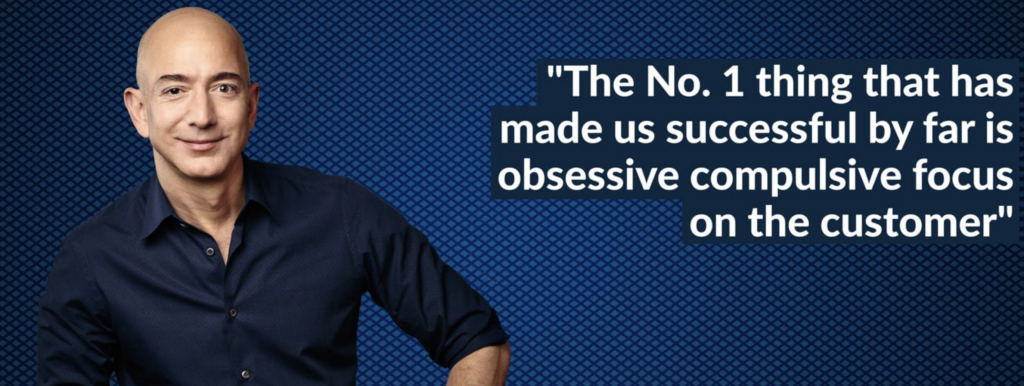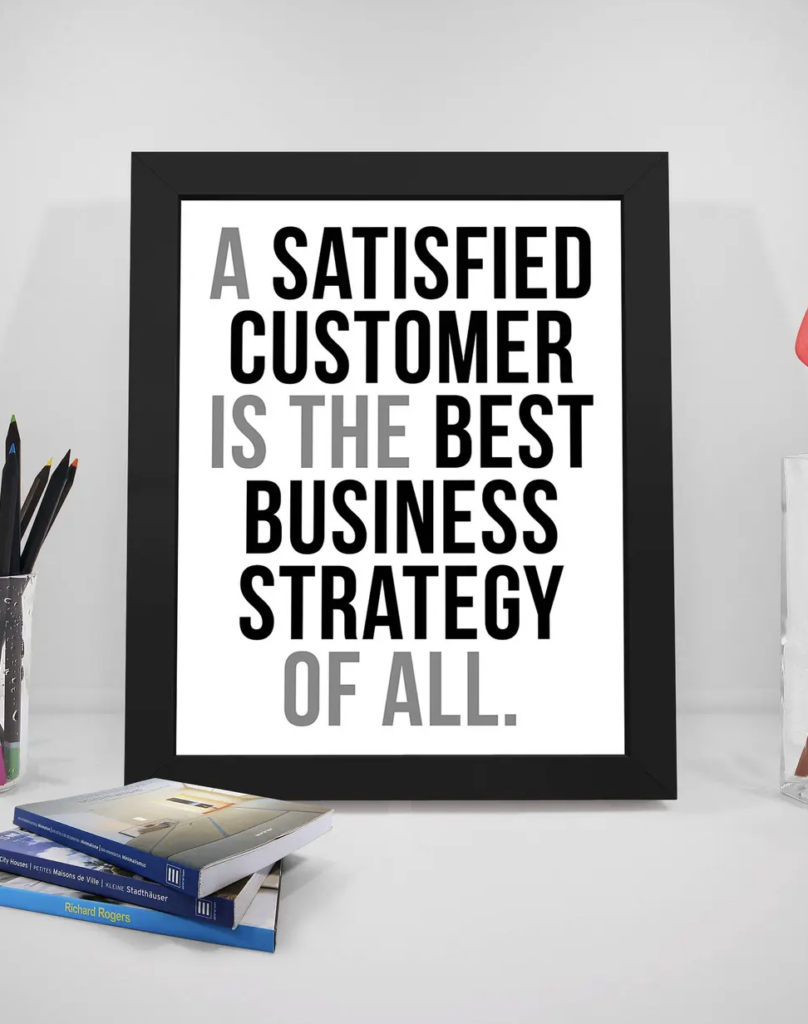General Business Strategy
Do you, and should you have a customer centric business?
Ever meet someone at a party and all they want to do is talk about themselves? Every story you have is interrupted with a better one from them. It’s as if they’re set to broadcast alone, with minimal input required from you before they head off on another tangent.
There’s no empathy, and no insight into how you might be feeling, or thinking – and while they might be entertaining for a while, it’s not someone you’d like to spend too much time with.
Believe it or not that’s what a lot of brands do too. Totally focussed on themselves and what they do, without considering what they actually do for the customer.
To give them their due, that’s probably not how they started out as a business. Most enterprises spring into life to solve customer problems. It’s just that somewhere along the way the ‘business of running the business’ takes precedent, and the customer becomes – at worst – an annoyance. It’s a very easy trap to fall into.

So first off, we’re going to give you a quick test to find out if you’ve wandered away from – even just a little bit – the customer.
But just before we do, a note about the Jeff Bezos quotes shown here. Yes, we know his business is in a different universe to yours (and ours), but nobody could doubt his success, and he’s famously been an evangelist about customer-centricity right from the start, so whatever your feelings about Amazon and its impact on a whole range of businesses, all credit to him for the absolute customer-obsessed juggernaut he’s created – he must know a thing or two, right?
On with your simple little test…
Do I have a customer-centric business?
Test 1
Read through your website and see if the words ‘we’ and ‘us’ is mentioned more than ‘you’.
Also, when your solution is described, is it in terms of benefits to the customer? Or do you focus only on features (clever and brilliant though they may be!) without explaining how the solve the customer need?
If you find the word ‘you’ everywhere, and features are accompanied by benefits, then you’re on the right track.
Test 2
When’s the last time you actually spoke to some of your customers, asked for their feedback, and then changed something in your business as a result?
If you can’t even remember, then you probably know the answer already.
Why should I build a customer-centric business?
OK, now to follow our own advice – if the feature we’re discussing is a customer-centric business, what’s the benefit?
Well, it’s pretty significant and it’s right at the bottom line!
There’s good data on this, with McKinsey reporting: “companies with a customer-centric, data-driven marketing and sales platform improve their marketing ROI by 15-20% or more.” And a study from IBM Institute for Business Value, finding that 72% of top performing brands are customer focused.
OK, but what does customer-centricity actually look like?
Well, it’s the opposite of ‘that guy’ at the party. It’s a person you meet who is actually interested in what you do, and why you do it. Who engages in a two-way conversation, listens to your thoughts, and reacts accordingly.
In business terms, customer-centricity is simply putting the customers front and centre, in everything you do.
When communicating to their customers, they’ll consider what they actually care about.
When developing products, they’ll try and solve real problems that customers have. When refining the client experience, they’ll consider what makes life easiest for the customer, not what saves them a few dollars in the short term.
So, in another sense, customer-centricity is long-term thinking.
A current example of this (as at the time of writing, July ‘22) would the airline industry. Qantas, for example, reduced their staffing levels to get through the pandemic, and are struggling now to get back up to speed. There is all sorts of chaos going on and the customer backlash is palpable.
Was it a necessary move? I don’t know, however, was it a decision made with shareholders front and centre, as opposed to the customer? Probably, and now look at the damage being done to the brand. It could take years of very expensive brand remediation to restore faith in the carrier. See what I mean about long term thinking?
So how do I develop a customer-centric culture?
There’s good news on two fronts here. First of all, if you have a business that’s not very customer-centric, but you’re still doing alright then there’s only upside ahead. Second, it’s not all that difficult to do. Here’s a few steps along the way.
1. Commit to leading change
Your business only exists because of your customers, so how about trying to beat a certain Mr Bezos’ stated ambition “to be earth’s most customer-centric company!”
Changing your organisational mindset to put customers first needs a little re-adjustment, and as always, it’s got to come from the top. You, and the leaders in your business have got to be committed to the change and demonstrate it to everyone else too. So stating your intentions is a good start!
2. Get to know your customers
As we said, the day-to-day of a business often obscures the customer. Yet if you don’t know your customers very well – how do you know that you’re continuing to solve their problems, and serve their best interests?
Depending on how you want to approach it, there are a number of ways to do this.
The easiest way, of course, is just to talk to them. Literally call up a handful of your clients and ask how it’s going. How is your business doing from their perspective? Why do they buy, why don’t they buy? Has anything changed for them? Is the service as good as you think it is? Can they see any room for improvement?
Obviously, the size of your business is going to influence how you do this. There are research companies that can help but you can also send out surveys, monitor social media and set Google alerts for mentions of your brand. There might even be some relevant information hiding in your database depending on what information you capture.
And by the way, even if you did an exercise a few years ago, doesn’t mean you’re done – customers change, competitors arrive, tastes move on – don’t make the mistake of taking them for granted. Repeat the exercise regularly. If we’ve learned anything from the last few years, it’s that nothing stays the same forever, and keeping your finger on the pulse of what your customers actually want is going to give you a competitive advantage over those who keep doing things the same way, day in day out, no matter what.

3. Embed it into all aspects of the business
OK, assuming you’ve gathered your insights and built a much better picture of your customers, now it’s time to ensure every part of the business is in the picture too.
Finance, marketing, product development, customer service, everyone needs to be focussed on the customers need and wants, and be able to use that information to guide their decisions along the way. (We talked about how this even played out on the toilet door signage in rival airlines!).
4. Drive real changes based on the customer
And finally, of course, there’s no point in doing all of this if it doesn’t effect change. A slight product tweak to better serve a sub-niche of your market, a re-write of your website to be more end-user friendly, opening up additional distribution channels, and perhaps, even the development of a new customer-centric marketing plan that includes a feedback loop from clients at every part of the customer journey.
The more ways you can find to embed the customer into the fabric of your business, the more you’ll adapt and change to the nuances of their needs, and the vagaries of the market. And the more you’ll reap the rewards of repeat purchase!
(Back to Bezos for five more ideas…here).

So, what do you think? Are you truly a customer-centric business? Or has it fallen by the wayside as you’ve grown.
Whatever stage you’re at, we can help you get to the clarity needed to focus your organisation, start that cultural change, put customers at the very heart of your brand and communications, and then drive it from the Inside Out!
Give us a call or drop us a line and let’s chat about doing a Bezos on your business!




